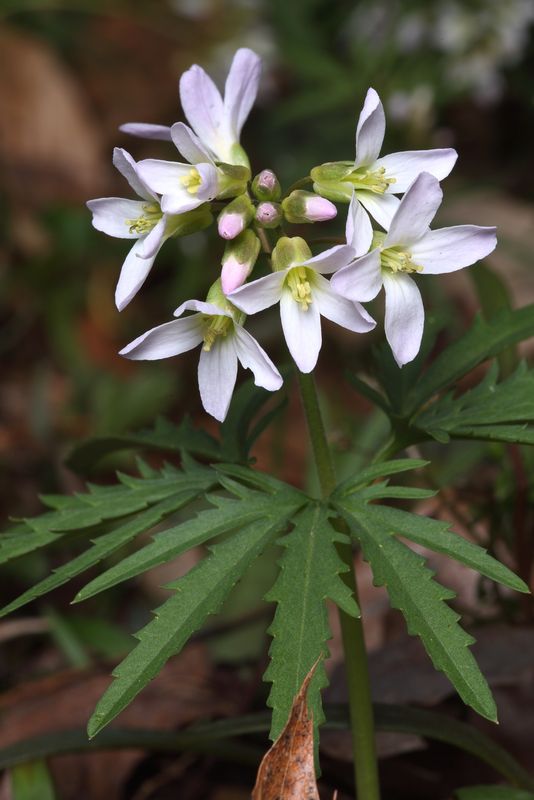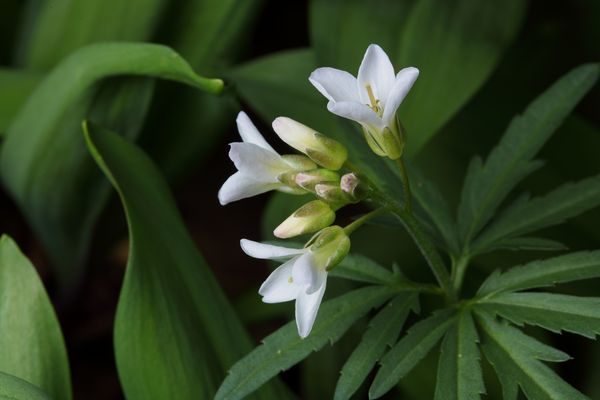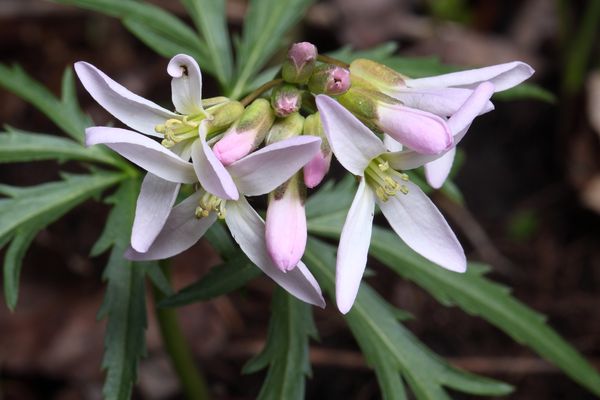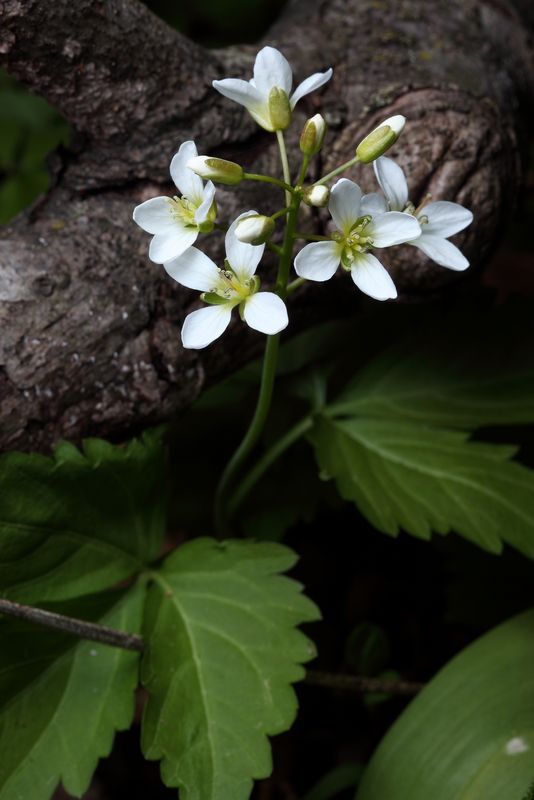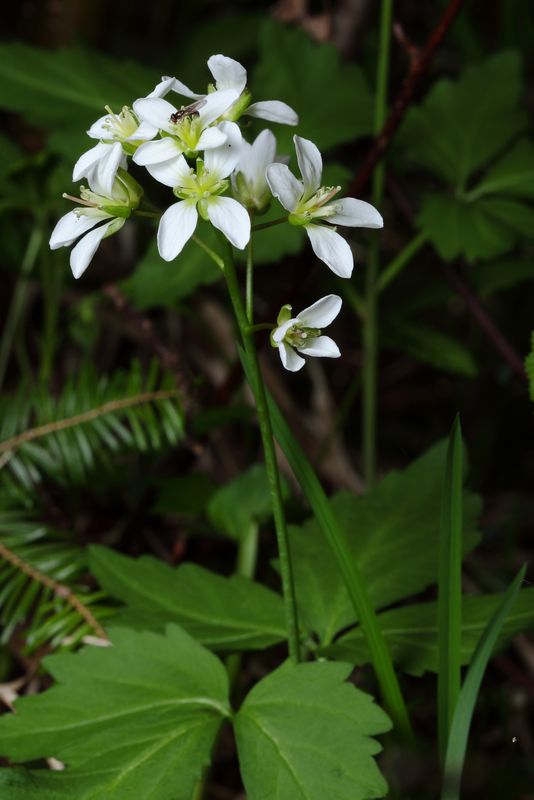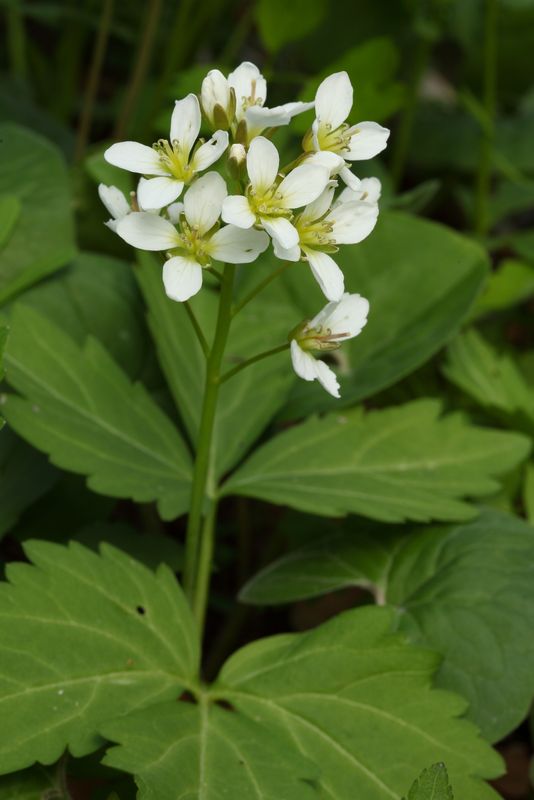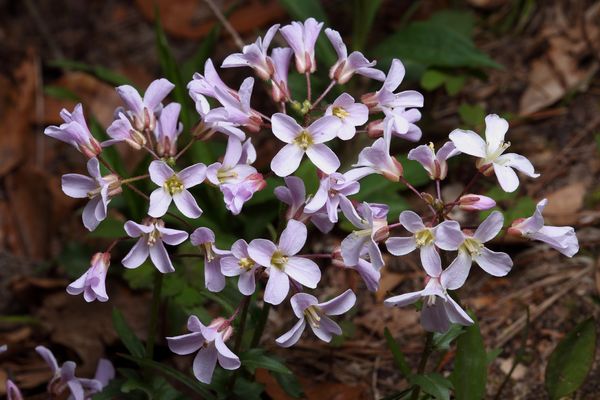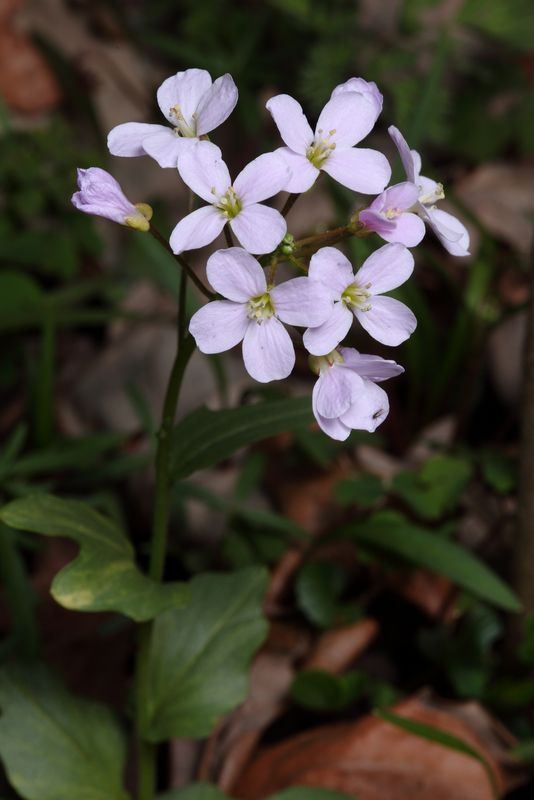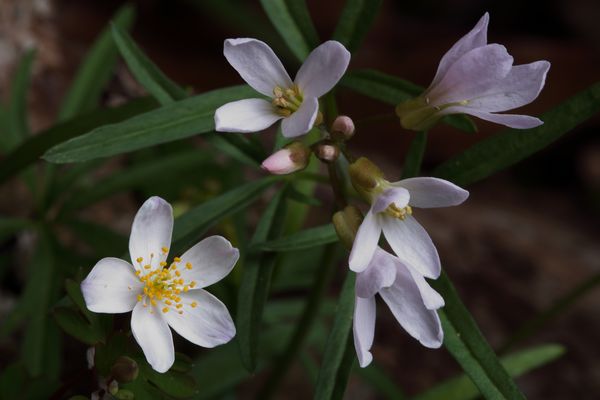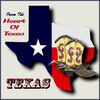Pass the mustard
May 20, 2015 20:06:17 #
Plants from the Mustard family have a bad name in North America because of a handful of aliens that have become serious pests. Just today I was noticing hundreds of acres around the county in farm fields and roadsides infested with Yellow Mustard. Garlic Mustard has invaded woodlands and crowds out all other vegetation.
But we do have a few interesting native plants form the Mustard family. These are all woodland plants and very early bloomers, before the trees leaf out.
This first one is the most common, Cutleaf Toothwort Cardamine concatenata, or "Cutthroat Toothache" as my niece calls it. "Wort" by the way is an old English word meaning "plant," and the name "toothwort" comes from the tooth-shaped root of these plants.
Mike
But we do have a few interesting native plants form the Mustard family. These are all woodland plants and very early bloomers, before the trees leaf out.
This first one is the most common, Cutleaf Toothwort Cardamine concatenata, or "Cutthroat Toothache" as my niece calls it. "Wort" by the way is an old English word meaning "plant," and the name "toothwort" comes from the tooth-shaped root of these plants.
Mike
May 20, 2015 20:12:36 #
This is the Broadleaf Toothwort. It is a woodland plant that blooms a little later than the previous plant.
Mike
Mike
May 20, 2015 20:17:58 #
I think your shoes know more about Michigans plants than I do! Lol!
These are all very well done shots! Beautifull!
These are all very well done shots! Beautifull!
May 20, 2015 20:29:24 #
Here are a few more.
1. This is an extraordinary clump of Spring Cress, Cardamine bulbosa.
2. Purple Cress Cardamine douglassii, usually found in wetter areas in the woods.
3. I completely blew this opportunity. There was a lot of the common Cutleaf Toothwort in the area I was hiking, a couple hundred miles from home, and when I saw this chance to get a False Rue Anemone blossom in the same frame with (what I assumed were) Cutleaf Toothwort blossoms, I concentrated on that and didn't look very closely at the plant. It wasn't until I got home and was looking at the images from the trip that I noticed that this plant is the extremely rare Dissected Toothwort Cardamine dissecta. I would have devoted more time to it had I recognized it for what it is.
Mike
1. This is an extraordinary clump of Spring Cress, Cardamine bulbosa.
2. Purple Cress Cardamine douglassii, usually found in wetter areas in the woods.
3. I completely blew this opportunity. There was a lot of the common Cutleaf Toothwort in the area I was hiking, a couple hundred miles from home, and when I saw this chance to get a False Rue Anemone blossom in the same frame with (what I assumed were) Cutleaf Toothwort blossoms, I concentrated on that and didn't look very closely at the plant. It wasn't until I got home and was looking at the images from the trip that I noticed that this plant is the extremely rare Dissected Toothwort Cardamine dissecta. I would have devoted more time to it had I recognized it for what it is.
Mike
May 20, 2015 20:34:34 #
BassmanBruce wrote:
I think your shoes know more about Michigans plants than I do! Lol!
These are all very well done shots! Beautifull!
These are all very well done shots! Beautifull!
:lol:
Thanks. These were taken down in Berrien, Van Buren and Allegan counties a couple of weeks ago.
Mike
May 20, 2015 20:54:48 #
Very beautiful post Mike! And very interesting things I didn't know. Would you mind if I used your shots in my plant journal? I am making it about wild flows and trees. Just something for me to play with.:)
May 20, 2015 21:18:49 #
All of your photos in this post are really beautiful and well done. However, even better is the fact that you took the time to elaborate on these plants. It is interesting and enjoyable!
May 20, 2015 22:03:49 #
May 20, 2015 22:33:39 #
Another day in the wild with Mike. No need for a wildflower guide, he's got these down pat. Very beautiful renditions of these small blossoms Sir. I appreciate you taking us with you.
May 20, 2015 22:45:58 #
Nikonian72 wrote:
:thumbup: Is the condiment "mustard" made from these plants?
Yes, prepared mustard comes from related Old World plants in another genus.
The key ingredient in prepared mustards is ground seeds from mustard plants. The types of mustards and the plants they are from include the annual, Black Mustard Brassica nigra, which has been cultivated in Asia and the Mediterranean for thousands of years and extensively used in Indian cooking. It colonizes disturbed areas in North America but does not invade natural areas to any significant degree.
White Mustard Brassica alba is also an annual thought to originate in the Mediterranean and is cultivated around the world. It's seed has a milder flavor than Black Mustard and was traditionally used in pickling. It is a highly invasive species in North America, and is particularly a problem in California.
Brown Mustard Brassica juncea seed is an important source of cooking oil in Asia and Russia, and this is the plant grown for "mustard greens" used in cuisines around the world. Also invasive, it is a problem in Michigan and Florida so far, and also listed as invasive by the state of Alaska. It is spreading fast in the plains states, the Rockies, and in southern California. I pull a lot of it from our yard, but I can't convince my wife that we could be adding it to salads. :)
Mike
May 21, 2015 00:41:42 #
Erv wrote:
Very beautiful post Mike! And very interesting things I didn't know. Would you mind if I used your shots in my plant journal? I am making it about wild flows and trees. Just something for me to play with.:)
Thanks, Erv. No problem, thanks for asking. PM me if you need anything in particular.
Mike
May 21, 2015 00:42:55 #
Bob Yankle wrote:
Another day in the wild with Mike. No need for a wildflower guide, he's got these down pat. Very beautiful renditions of these small blossoms Sir. I appreciate you taking us with you.
Thanks very much, Bob.
Mike
May 21, 2015 00:43:36 #
Cwilson341 wrote:
All of your photos in this post are really beautiful and well done. However, even better is the fact that you took the time to elaborate on these plants. It is interesting and enjoyable!
Glad you enjoyed this, Carol. Thanks.
Mike
May 21, 2015 01:31:50 #
May 21, 2015 02:52:10 #
I had no idea that the mustard family was such a large one. Your posts are always beautiful as well as educational, Mike, a double pleasure to view. I had a question about mustard greens, but I see you've already answered it. Mustard greens are delicious..cooked and uncooked, but they're a little pungent uncooked.
Blenheim Orange wrote:
Plants from the Mustard family have a bad name in ... (show quote)
If you want to reply, then register here. Registration is free and your account is created instantly, so you can post right away.
